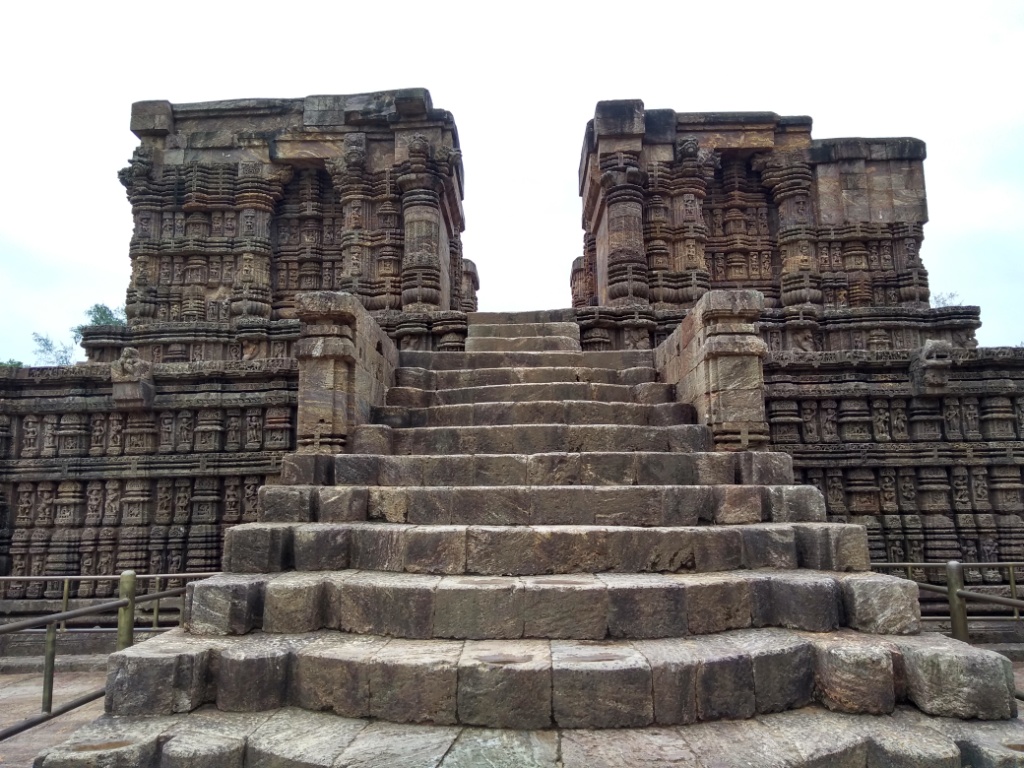Parasurameswar Temple- History, Architecture, Entry Timings, Things to Explore and Much More
If you are looking for a stimulating experience whether as a devotee, art enthusiast or for spiritual enlightenment, then you should definitely consider visiting Parasurameswar temple for it will not let you fail in your expectations. It represents the ongoing legacy of Odisha’s architectural wonders and acts as a portal to the divine, making a deep impression on everyone who has the honor of visiting this holy location.
The intricate carvings and motifs that cover the temple’s beautiful architecture demonstrate the skill of the time’s craftspeople. Visitors are in awe at the expertise and artistry used in the construction of the temple as each walls intricately depicts scenes from old epics and scriptures.
Parasurameswara Temple is located in Bhubaneswar, the temple city of Odisha. This historic Hindu temple is renowned for its beautiful construction, which is thought to have influenced later temples in Odisha. Experts claim that this was the first temple where the main sanctum was connected to the entrance hall known as Jagamohana.
This temple is dedicated to Lord Shiva and is situated on the same grounds as the Mukteswara Temple. Lord Shiva is worshipped here as Parasurameswara. The temple’s 1,000 Shivalingas located in the northwest quadrant are one of its main attractions. As one of the most significant shrines dedicated to Lord Shiva in India, the shrine is frequented by followers throughout the year.

History of Parasurameswar Temple in Bhubaneswar
According to historians, Madhavaraja II of the Shailodbhava Dynasty constructed the temple in the seventh century AD. The Shailodbhavas are thought to have been ardent followers of both Shaivism (Lord Shiva worship) and Shaktism (Goddess Shakti worship). The temple underwent renovation in 1903, and the sanctum’s inner ceiling underwent some adjustments.
Parasumastami is the main festival observed at the Parasurameswara Temple. The Hindu calendar places this celebration in the Ashada month (June or July). This festival includes a procession and a feast.

Architecture of Parasurameswar Temple in Bhubaneswar
The Parasurameswara Temple’s Kalinga-style construction is well-known. The shrine’s spire, or Shikhara, is created in the Pancharatha architectural style. The sanctum (Vimana) and prayer hall (Jagmohana), which are two of the temple’s primary divisions, are each given their own name. The sanctuary is square in design, and the walls are divided by sections known as Pagas or Rathas. The prayer hall, on the other hand, is shaped like a rectangle and has a terraced roof.
Beautiful carvings of elephants may be seen near the prayer hall’s main entrance. The hallway contains four windows: two on the west side, one on the north side, and one on the south side. These windows feature sculptures of musicians and dancers in an interlaced pattern. In addition, it includes another entryway facing south.
Sculptures of numerous Gods, including Lord Ganesha and Goddess Chamunda, as well as representations of the Saptamatrikas—seven Hindu goddesses who stand for power (Shakti)—can be found on the north wall of Jagamohana. Brahmi, Maheshwari, Kaumari, Vaishnavi, Varahi, Indrani, and Chamundeshwari are the names of these deities.
There are sculptures of animals, flowers, lovers, mythological tales, and Hindu gods on the porch and the exterior walls of the temple. On the shrine’s walls are additional carvings of Ardhanareswara, Ganga, Yamuna, Lord Shiva, and Goddess Parvati. Nataraja, a representation of Lord Shiva, has been seen in many dancing stances.

Things to Explore in Parasurameswar Temple
The Parasurameswara Temple in Bhubaneswar is best visited while admiring its magnificent architecture, particularly the sculptures on the walls and doors and the thousand Shivalingas. Visitors to the temple can also unwind on the grounds, close to the pond and in the lovely garden.
Tourists can also visit some other well-known holy sites nearby, including the Parasurameswara Temple, Lingaraj Temple, Mukteswara Temple, Rajarani Temple, Kedar Gouri Temple, and Ananta Vasudeva Temple. These temples are all renowned for having beautiful architecture.

Entry Timing to Parasurameswar Temple in Bhubaneswar
The shrine is open for devotees every day of the week from 5 am to 6 pm.
How to Travel to Parasumrameswar Temple in Bhubaneswar
Parasurameswara Temple Bhubaneswar Address: Near Bindu Sagar Pond, 7th Century A.D., Old Town, Bhubaneswar, Odisha, 751002, India
Parasurameswara Temple is situated in one of the important and busy areas of the city. There are always private taxis, auto rickshaws, and local buses available, making it simple to get here from any location within the city, the airport, the railroad station, or the bus stop. Hire a private cab from Bhubaneswar for a hassle-free city commute.
The Parasurameswara Temple is located about 3.6 kilometers from the Biju Patnaik International Airport, and the Bhubaneswar Railway Station is located about 3.9 km away. Approximately 7.3 km away is the Baramunda ISBT Bus Stand, which is surrounded by buses for other towns in Odisha and other nearby states.
Things to Remember While Visiting Parasurameswar Temple
- Shoes should not be worn within the temple.
- There is a parking lot outside the building.
- The shrine is open to photography.
- Walking near the pond should be done with caution.
The Parasurameswar Temple is a superb example of Bhubaneswar’s rich tradition and outstanding architectural talent. One is greeted as soon as they enter its holy grounds by the mesmerizing beauty of its complex carvings and the divine vibe that permeates the space. A trip to the Parasurameswar Temple is an opportunity to interact with Bhubaneswar’s rich cultural legacy in addition to entering the world of ancient art and devotion. It enables visitors to immerse themselves in the enduring wisdom and traditions of the land and serves as a reminder of the profound spirituality that has characterized the area for millennia.